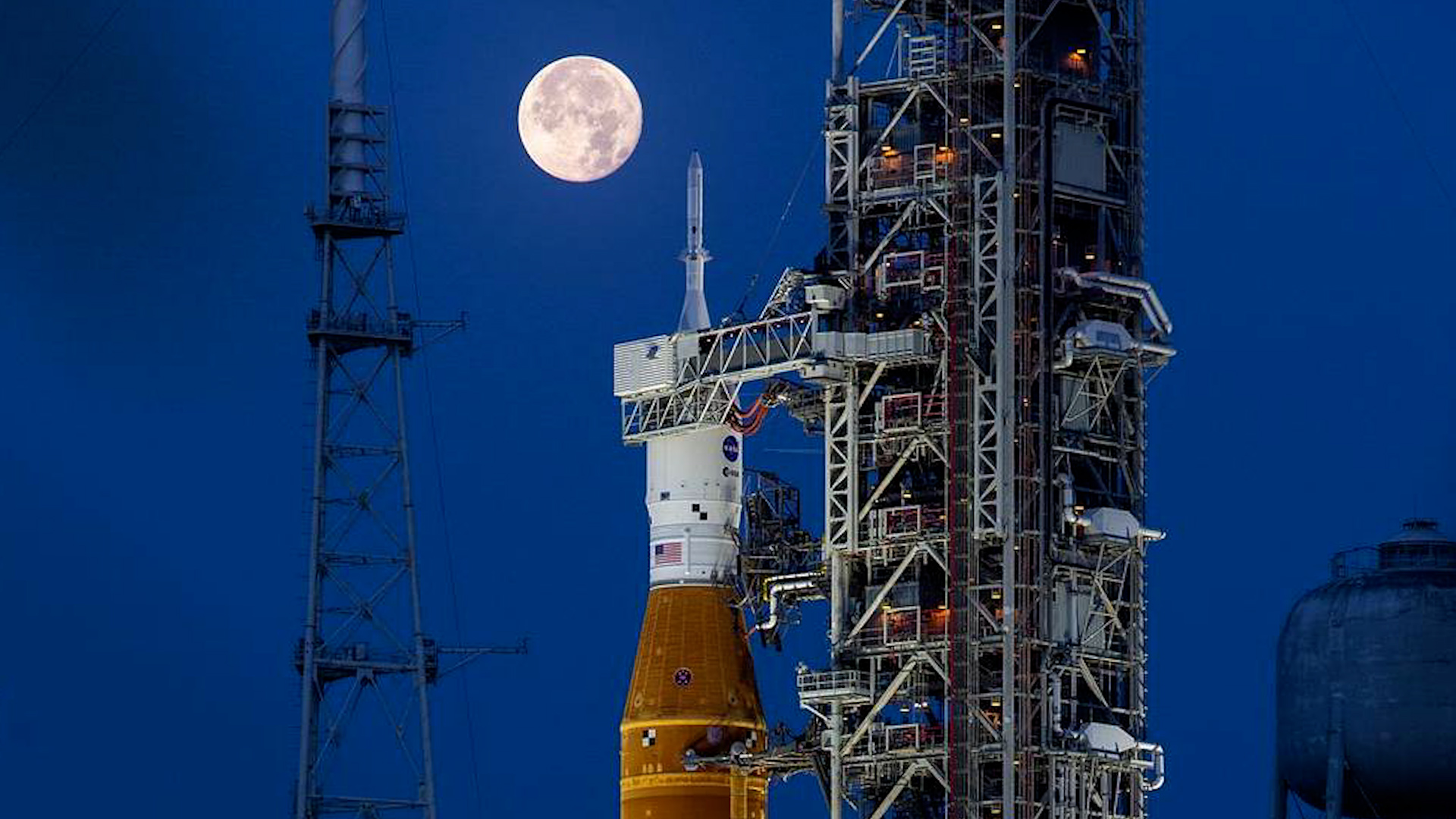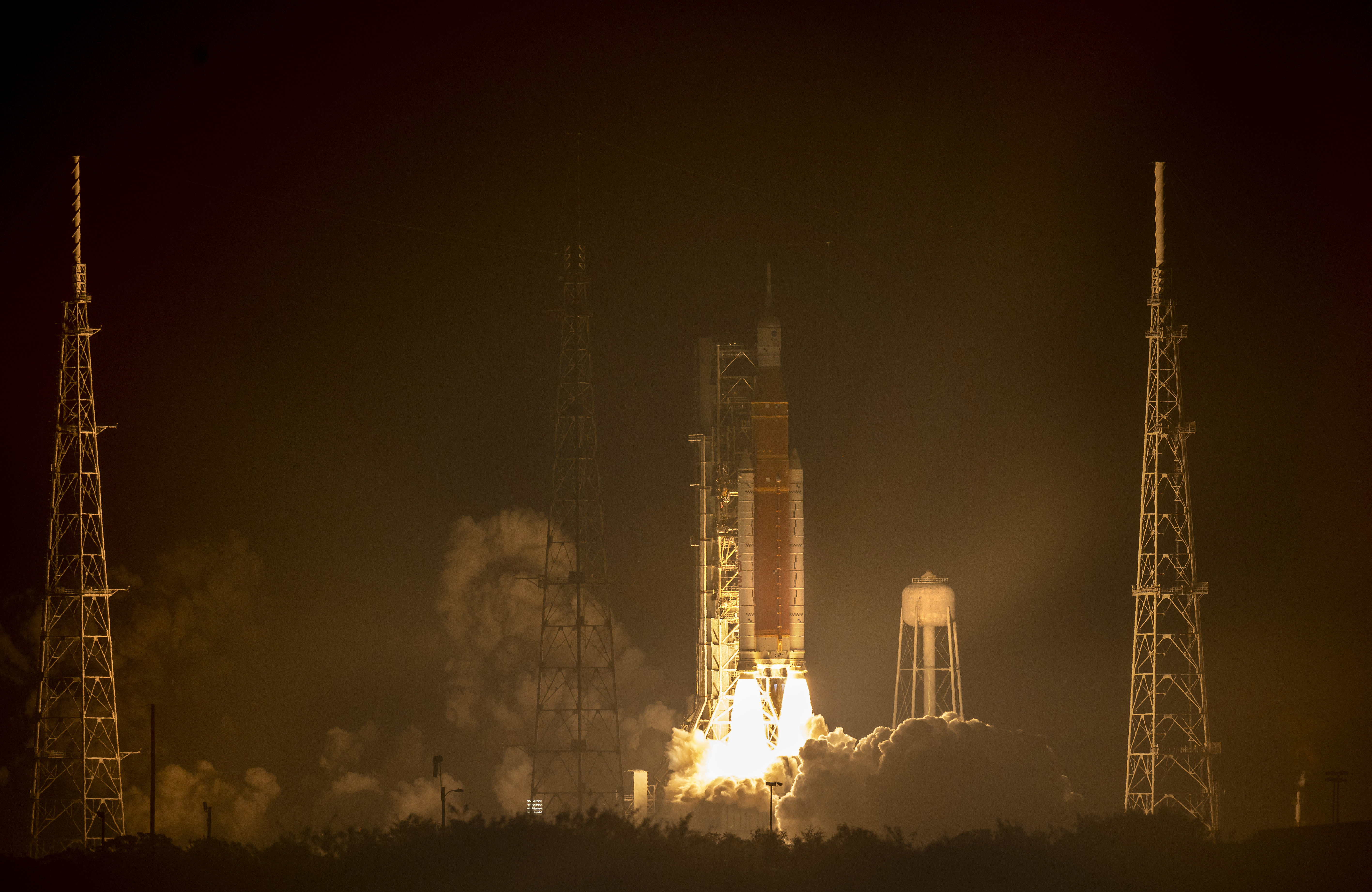Editor’s Note: This story was updated Nov. 15, 2022 to reflect a new launch window.
Fifty years since the last American set foot on the moon, NASA is preparing to return to lunar orbit in the first stage of its long-term Artemis mission.
The massive Space Launch System rocket, with the Orion spacecraft atop, is scheduled to be launched Wednesday from Kennedy Space Center in Florida, named for Apollo's twin sister in Greek mythology.
The Artemis program aims to reach new space exploration goals by discovering new lunar regions and, in the years to come, eventually landing Mars.
Three successive Artemis missions are currently in the works. On Wednesday, conditions permitting, an uncrewed test flight launch will happen for Artemis 1.
The Artemis 2 mission is scheduled launch sometime after 2024 with a crewed flight beyond the moon, taking them farther in space than ever before.
The Artemis 3 mission plans to land the first female astronaut and the first astronaut of color on the moon to spend a week performing scientific studies on the lunar surface. If successful, Artemis 3 will be NASA’s first crewed moon landing since Apollo 17 in 1971.
Aided by the dramatic changes in technology since the 1970s, Artemis aims to build a presence on the moon and explore deeper into the solar system.
Here's a look at how that technology compares:
How is Orion different from Apollo?
The technology advances of the Orion spacecraft -- where astronauts will eventually be placed during crewed missions -- will enable missions of far greater scope, duration, and complexity than the Apollo technology.
It has 50% more habitable space than the spacecrafts of Apollo's time, allowing more room for the crew, tasks, and supplies. While Apollo allowed three crew members to travel in space for up to 14 days, Artemis allows four crew members to travel for up to 21 days.
Other differences between Orion and Apollo include features like flight computers, advanced composite materials, 3D-printed parts, solar arrays and an improved heat shield.
The Apollo spacecrafts and Orion share a similar parachute sequence for landings, including deployment altitudes and timing. Like Apollo, Orion can safely land with only one drogue and two main parachutes in an emergency. The main difference is that Orion’s larger mass requires larger parachutes. Orion’s crew module is also approximately 23,000 pounds, while Apollo only weighed about 12,000 pounds,
Apollo ushered in the age of computers and software, while Orion capitalizes on a half-a-century of computing advancements. These developments are powering the Artemis I uncrewed test flight before a crewed mission is launched, drastically increasing safety.
Liftoff: Then and Now
During the first stage, Saturn V rocket was powered by five kerosene-fueled F1 engines, each generating 1.5 million pounds of thrust at sea level, giving the vehicle a total liftoff thrust of 7.5 million pounds.
Now, the SLS first stage is powered by four hydrogen-fueled RS-25 engines, each generating 418,000 pounds of thrust at sea level, giving the SLS Block 1 a total liftoff thrust of 8.8 million pounds.
At launch, SLS will become the most powerful rocket in the world, producing 15 percent more thrust than Apollo’s Saturn V rocket.



